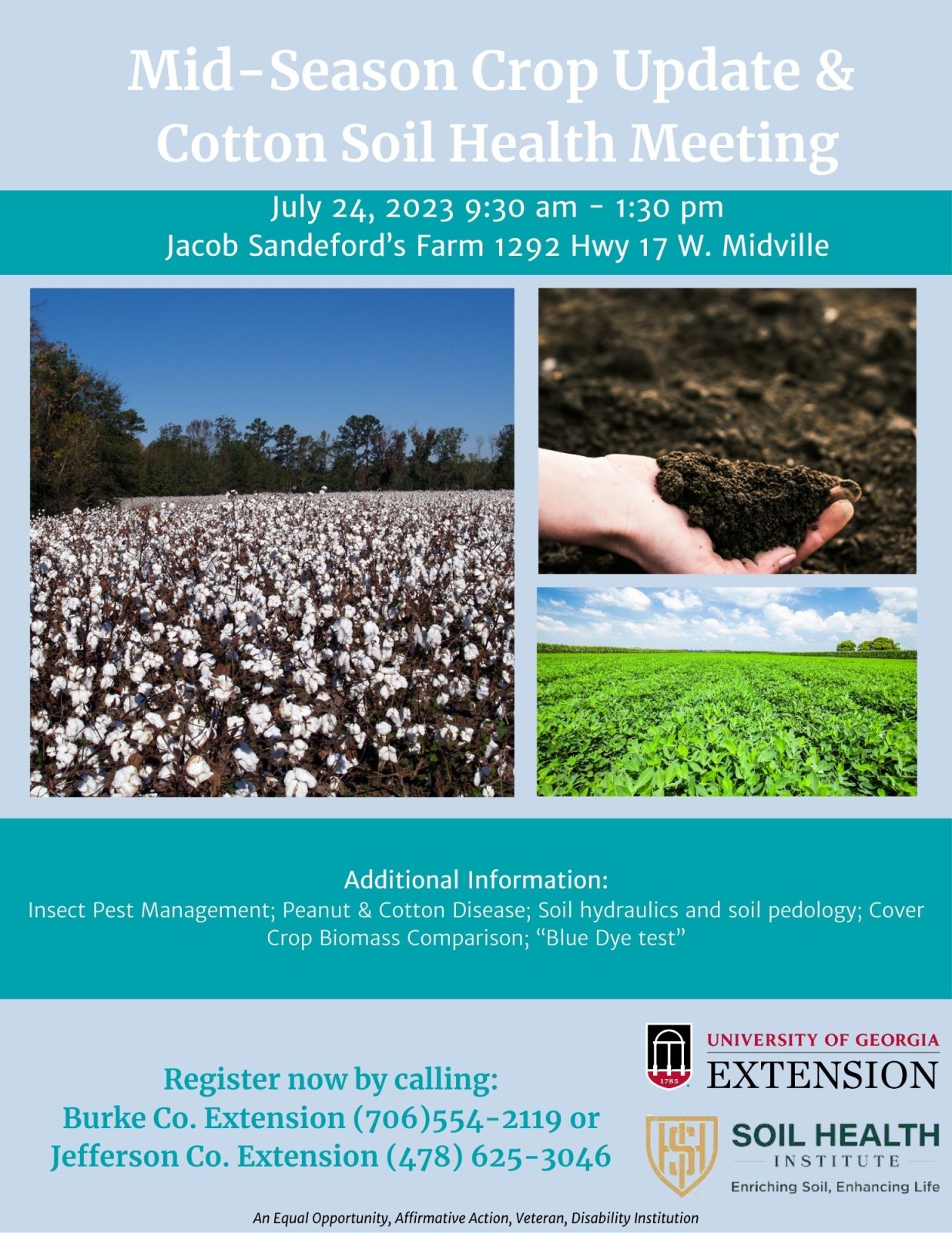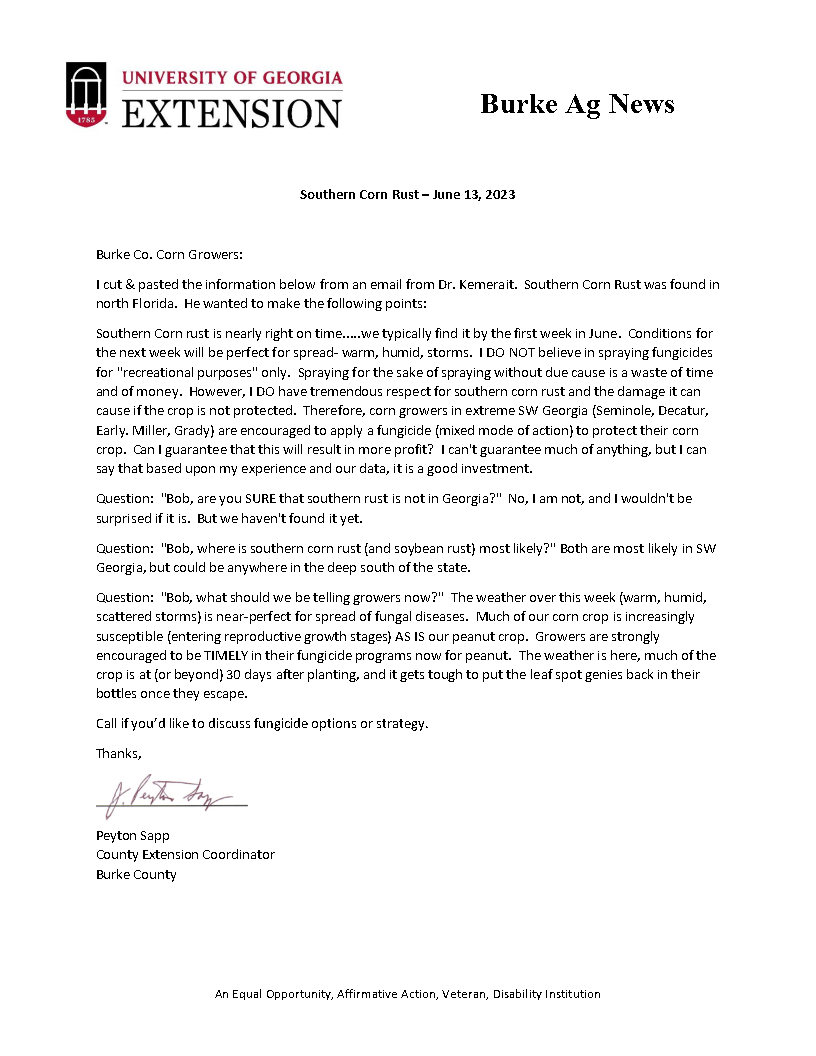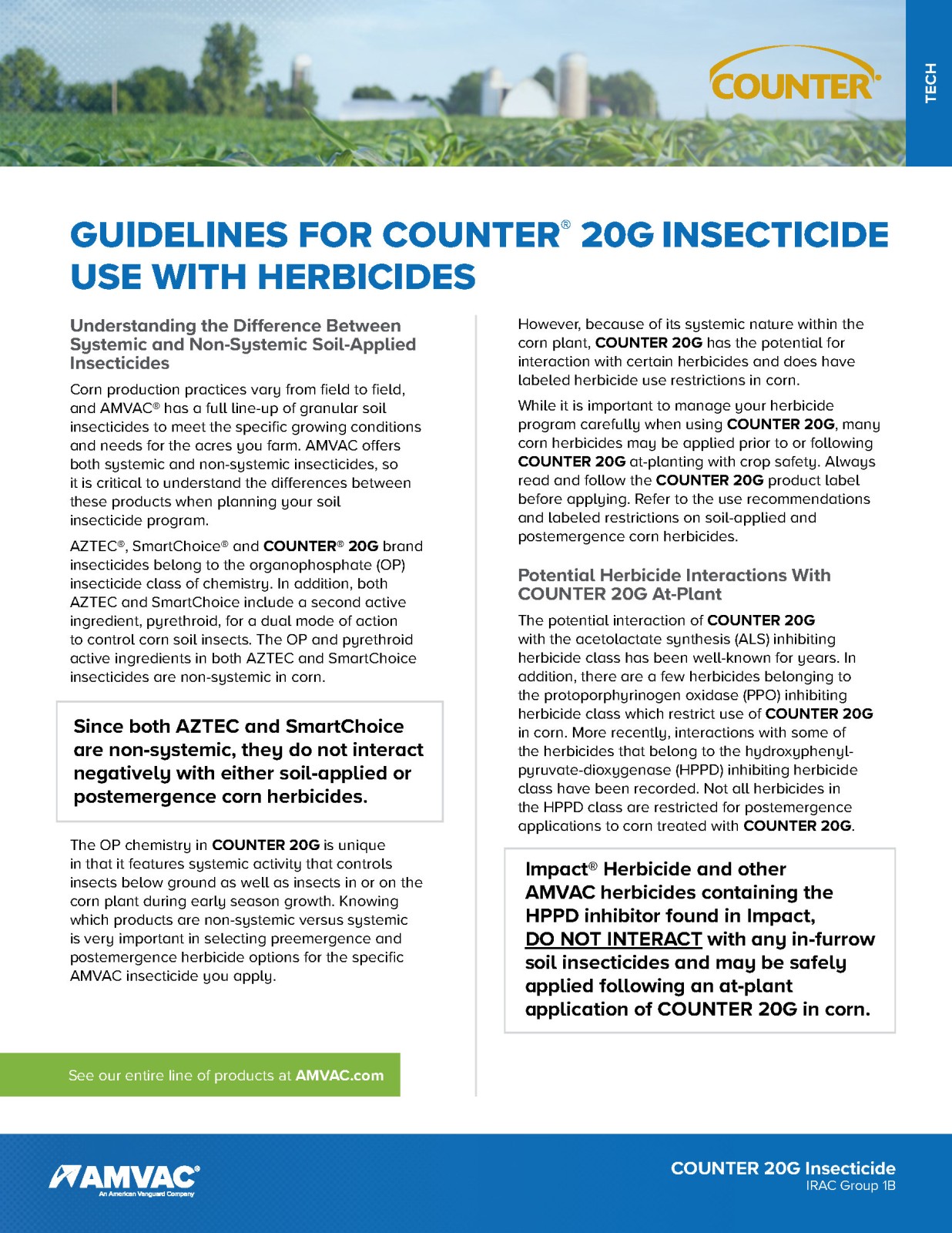Corn
-
Peanuts- White Mold Fungicides are still very important as soon as you can get in the field. From Dr. Bob Kemerait on white mold and leaf spot ““Big Gun” white mold materials almost always go out at 60 and 90 days after planting; a grower’s BEST choice of fungicides at 75 days and after 90…
-
Southern Corn Rust is a fungal disease caused by the fungus Puccinia Polysora. Southern Corn Rust is DIFFERENT than regular corn rust. You can identify Southern Corn Rust by the orange to tan pustules that occur in clusters on the upper leaf surfaces. When you walk through a field of corn with rust pustules the orangish…
-
The following information came from Dr. Erik Prostko, UGA Weed Science Specialist A few things to chew on: 1) I have gotten many questions about tank-mixing Roundup + Liberty for weed control in field corn. Check out this picture from my 2024 plots (May 6). No real difference in weed control between 22 oz/A or…
-
The Information below came from Dr. Simer Virk, UGA Precision Ag Specialist. If you have any questions or need clarification, call your county extension agent. In Burke County that number is 706-554-2119. Below are some useful formulas to determine seeding rate, seed spacing, number of seeds per foot or assess emerged plant population based on…
-
When was the last time you pulled a water sample on that water you fill the spray rig with? Do you have any idea what the pH is of the water you put in the spray tank? Most likely the well at “the shop” has a very different pH than the deep well for the…
-

August 9th
-

-

June 13, 2023
Posted in: Corn -

Dr. Eric Prostko included an information sheet from AMVAC in his weed science blog (https://ugaweedscience.blogspot.com/). During corn planting time, it’s a good reminder for us that Counter 20G and other organophosphate insecticides used in furrow have the potential to cause negative crop reactions with certain herbicides. Take a look at the information sheet for specifics. As…
Posted in: Corn -
Corn planters are starting to roll in south Georgia and among all the planter issues every year, one of the most common is seed depth variations. Check out the information in the blog post on utilizing block test method to check planter depth settings before getting out in the field.
